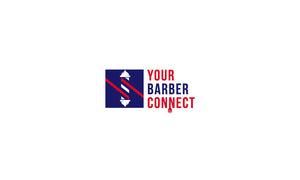Knowing What to Charge for Your Barber Services: A Comprehensive Guide

Setting the right price for your barber services is crucial for your business's success. Charging too much might deter potential clients, while charging too little can undervalue your skills and cut into your profits. Here's a comprehensive guide on how to determine the best pricing strategy for your barber services.
1. Understand Your Costs
Fixed Costs: These are the expenses that remain constant regardless of how many clients you serve. They include rent, utilities, insurance, and equipment maintenance.
Variable Costs: These costs fluctuate based on your service volume. They include supplies like razors, hair products, and cleaning materials.
Calculate your total monthly expenses and divide by the number of clients you expect to serve to determine the minimum price you need to charge to cover costs.
2. Research the Market
Competitive Analysis: Look at what other barbershops in your area are charging for similar services. Visit their websites, call them, or even visit in person to understand their pricing structure.
Target Market: Identify your target clientele and understand their willingness to pay. A high-end clientele might be willing to pay more for premium services, while a budget-conscious market will seek value for money.
3. Evaluate Your Services
Skill Level: Your experience and expertise should reflect in your pricing. If you have advanced skills or specialized training, you can justify higher prices.
Service Offerings: Differentiate between basic services (like a simple haircut) and premium services (like a full grooming package). Offer a range of services at different price points to cater to various client needs.
4. Consider Your Location
Demographics: The demographics of your location play a significant role in pricing. Urban areas with higher living costs can support higher prices compared to rural areas.
Accessibility: If your shop is located in a high-traffic area with convenient access, you can charge more due to the added convenience for clients.
5. Calculate Your Desired Income
Determine your desired annual income and divide it by the number of working weeks in a year, then by the number of clients you can realistically serve each week. This will give you an idea of how much you need to charge per client to meet your income goals.
6. Set Your Prices
Based on your cost analysis, market research, and income goals, set your prices. Ensure they cover your costs, reflect your expertise, and align with market standards.
7. Offer Tiered Pricing
Basic Services: Offer basic services like haircuts, beard trims, and touch-ups at standard rates.
Premium Services: Provide premium packages that include additional services like facials, hair treatments, and personalized styling. These can be priced higher.
Membership Packages: Offer membership packages for regular clients. These can include a set number of services per month at a discounted rate, ensuring steady income.
8. Review and Adjust Regularly
Regularly review your pricing strategy to ensure it remains competitive and profitable. Adjust prices based on changes in costs, market trends, and client feedback.
9. Communicate Value
Ensure your clients understand the value they are receiving for the price they pay. Highlight your skills, the quality of products used, and the overall experience you provide.
10. Provide Exceptional Service
Lastly, always aim to exceed client expectations. Exceptional service justifies higher prices and encourages repeat business and referrals.
Example Pricing Structure
- Basic Haircut: $25
- Beard Trim: $15
- Haircut and Beard Trim Combo: $35
- Premium Grooming Package: $60 (includes haircut, beard trim, facial, and hair treatment)
- Membership Package: $100/month (includes 4 haircuts and 2 beard trims)
By carefully evaluating your costs, market, and services, you can set prices that attract clients while ensuring your business remains profitable. Regularly revisiting and adjusting your pricing strategy will keep you competitive and successful in the evolving barber industry.
